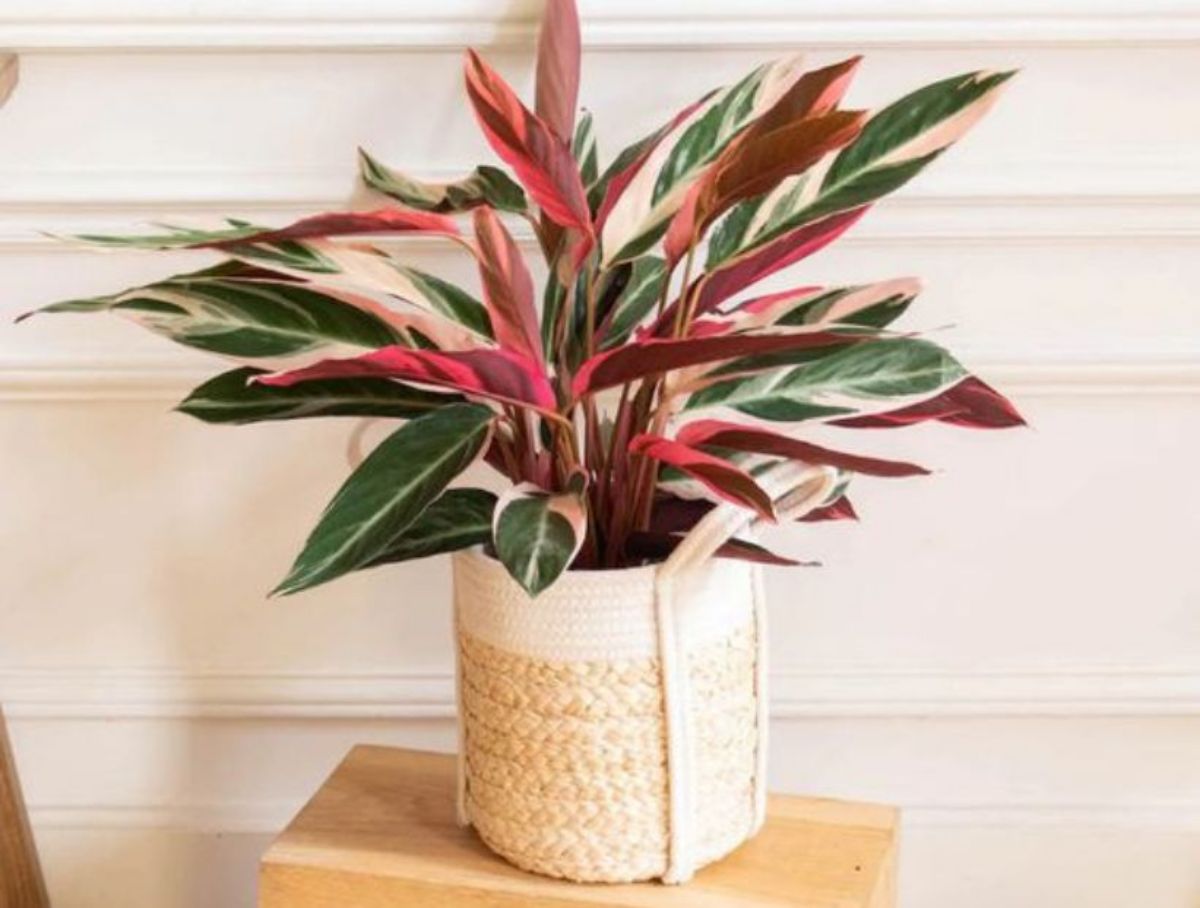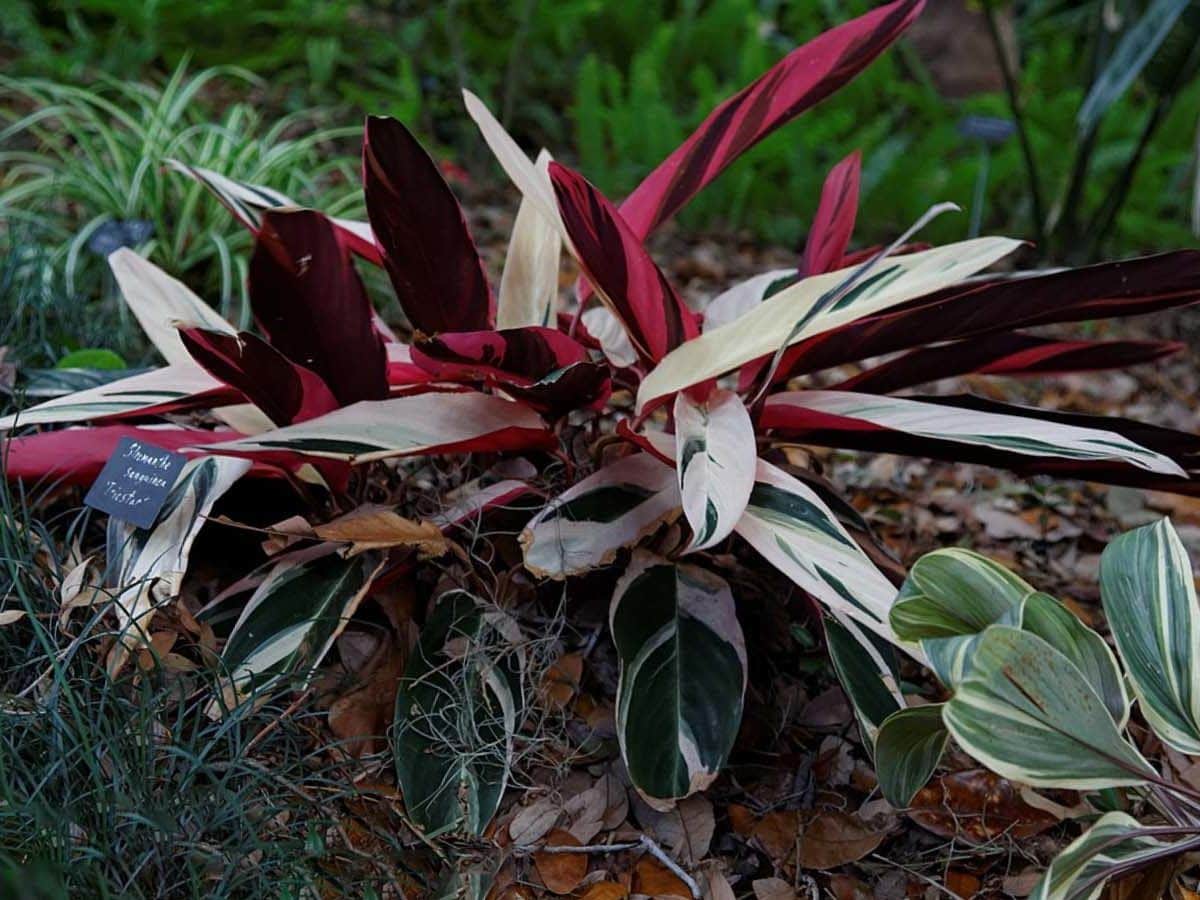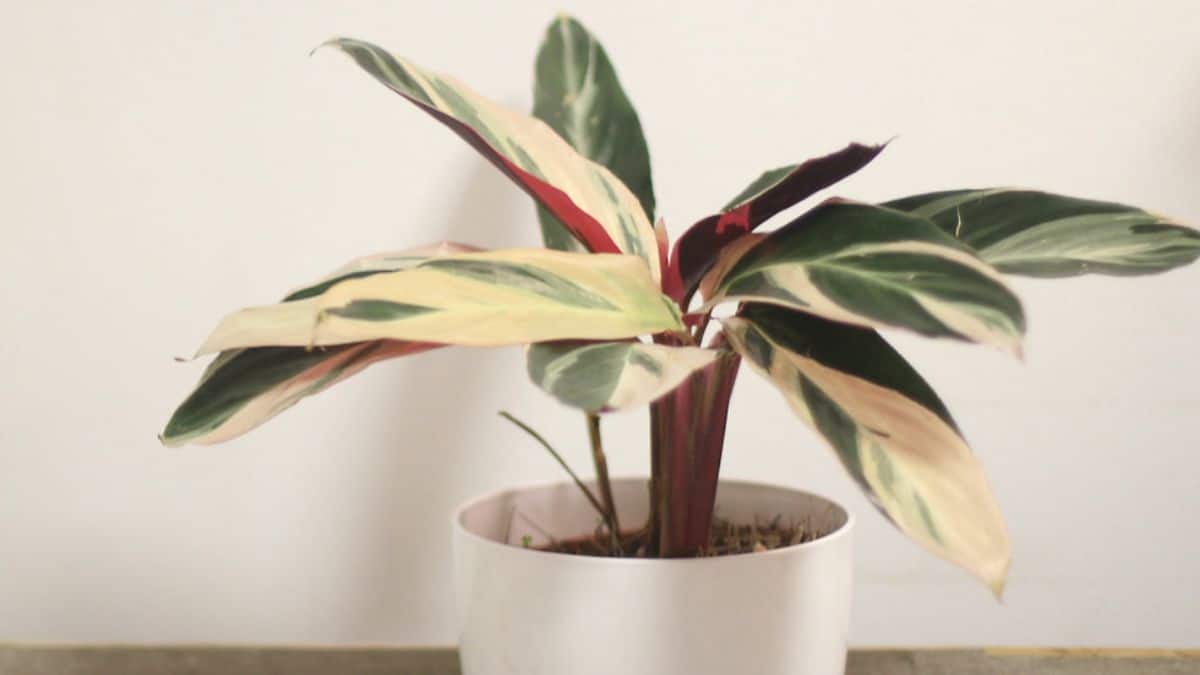
Image source Calathea triostar: parati.com.ar
There is no doubt that Calatheas are one of the most striking purifying plants. Due to its leaves, and the color of these, it is almost impossible to resist them. And one of the best known and appreciated is the Calathea triostar.
Also called Calathea Stromanthe, it is a beauty of colors in its leaves, and can even have pink tones (hence, in some places they call it the most "pink"). But what do you know about her?
How is the Calathea triostar

Source: how-to-plant
First of all, you should familiarize yourself with this calathea since it is quite different from others that you may know or have seen. like the others, is part of the family of marantaceae and are commonly called "prayer plants." The reason is that they are "very alive" plants, not only because they are living plant beings, but also because they move.
Throughout the day, these plants are capable of subtly moving their leaves in such a way that they can fold them or follow the direction of the sun throughout the hours. This is what is called tropism and it is what they like most about Calatheas.
Specifically, the Calathea triostar also receives another name: peacock. And this is due to the leaves it has. If you look closely, it is a plant with medium-sized leaves, where, unlike others, it is much more colorful. In fact, although the underside of the leaf is completely red (or a reddish hue), the beam is between green, white, yellow and yes, it can also contain pink. That is what makes it so striking to the eyes.
These leaves are elongated and end in a point, unlike other prayer plants that are usually round or oval. It develops a lot of leaves like this, which is why it gives it an appearance, like its popular name, of a peacock, because of those beautiful colors.
It is not too high. In fact in a pot it is usually kept at a height of between 40 and 90 centimeters, so it will not take up much space.
Calathea triostar care

Source: Youtube Green Heart
Focusing on the care of the Calathea triostar, you should know that, of all the Calatheas (except perhaps the Calathea White fusion, which is a "higher level"), it is one of the most complicated to care for because you need to be more aware of it.
Therefore, it is recommended that it is not a gift for a person who does not have minimal knowledge of gardening, of the calatheas and, above all, that you do not have time. And it is that, on a daily basis, it will demand a series of needs that must be met to avoid disfigurement (and this can make it lose its beauty in a matter of days).
What do you need? We detail it for you.
Location and temperature
The first necessity that you will have to solve is the location of the plant. Indoor or outdoor? Well, it really depends on the climate you have. If it's cold, it will have to be indoors, because this calathea does not tolerate cold very well (to the point that if it drops below 18 degrees it starts to suffer).
This implies that you could put it outside in the summer (as long as the temperatures are not excessive) and put it in the winter. But above all you must take care that it does not have direct sun.
In its natural habitat, in Brazil, these plants live in the jungles but in shade, because there are trees and other taller plants that block the sun and they only "feed" on a little light. Hence, they do not need the sun as much as others.
If the sun shines on them, in addition to burning the leaves (which are not prepared for that), they can also disfigure their color (even changing them).
Transplant
If you want the Calathea triostar to grow very large, one of the expert secrets is transplant it every year. In this way it will always be growing, which is what we want.
As for the soil to use, our recommendation is that you mix peat with drainage such as perlite, akadama, or even orchid soil. This will make it much looser and allow the roots to breathe.
Irrigation and humidity

Source: viegas95arg
And here we have the most important care of the Calathea triostar. Both irrigation and humidity are determining factors for a good and long life of the plant.
We start with irrigation. You should know that this It must be enough so that the plant has a moist substrate all the time. But without flooding it. In fact, a little trick is to let it dry minimally between waterings.
For example, you can water it on Sunday and monitor in your home how long it takes to dry. If it does not last until the following Sunday, you will know that you have to water it every few days.
Now, what about the humidity? This is the most important and critical point to maintain the leaves of the calathea and that they do not look dry. In fact, If you notice that the edges are dry, and that the tips begin to turn brown, you will have to get down to work. How?
- Daily try to spray water, not only in summer, but also in winter. It will be good for you to have a thermometer with a hygrometer to monitor the humidity in the area (60% and above would be ideal).
- Once a week you can put her in the shower and wet her completely. Yes, it is as if it were watering only, instead of doing it with a watering can or bottle, you will do it like this.
- Set up a humidifier. In this way you will ensure that there is more humidity in the area and your Calathea triostar will benefit. Another option is to put a plate with perlite and water that has the same effect.
Subscriber
During the months of spring to autumn it is advisable to provide a little fertilizer so that the leaves grow and so that they do not lose that characteristic color.
You can use a liquid fertilizer diluted in water and do it every 15 days.
Reproduction
Finally, what would you like to multiply your Calathea triostar to? When it gets too big, it's something you need to do to keep it from taking up more and more space. But one of the characteristics of this calathea is that in reality it does not have stems but only leaves. So how does it reproduce?
It is made by dividing the plant itself. That is, separating the rhizome to have several identical plants. When these are "healed" they reproduce again and a few years later you could divide again.
Now that you know a little more about the Calathea triostar, do you dare to have one?